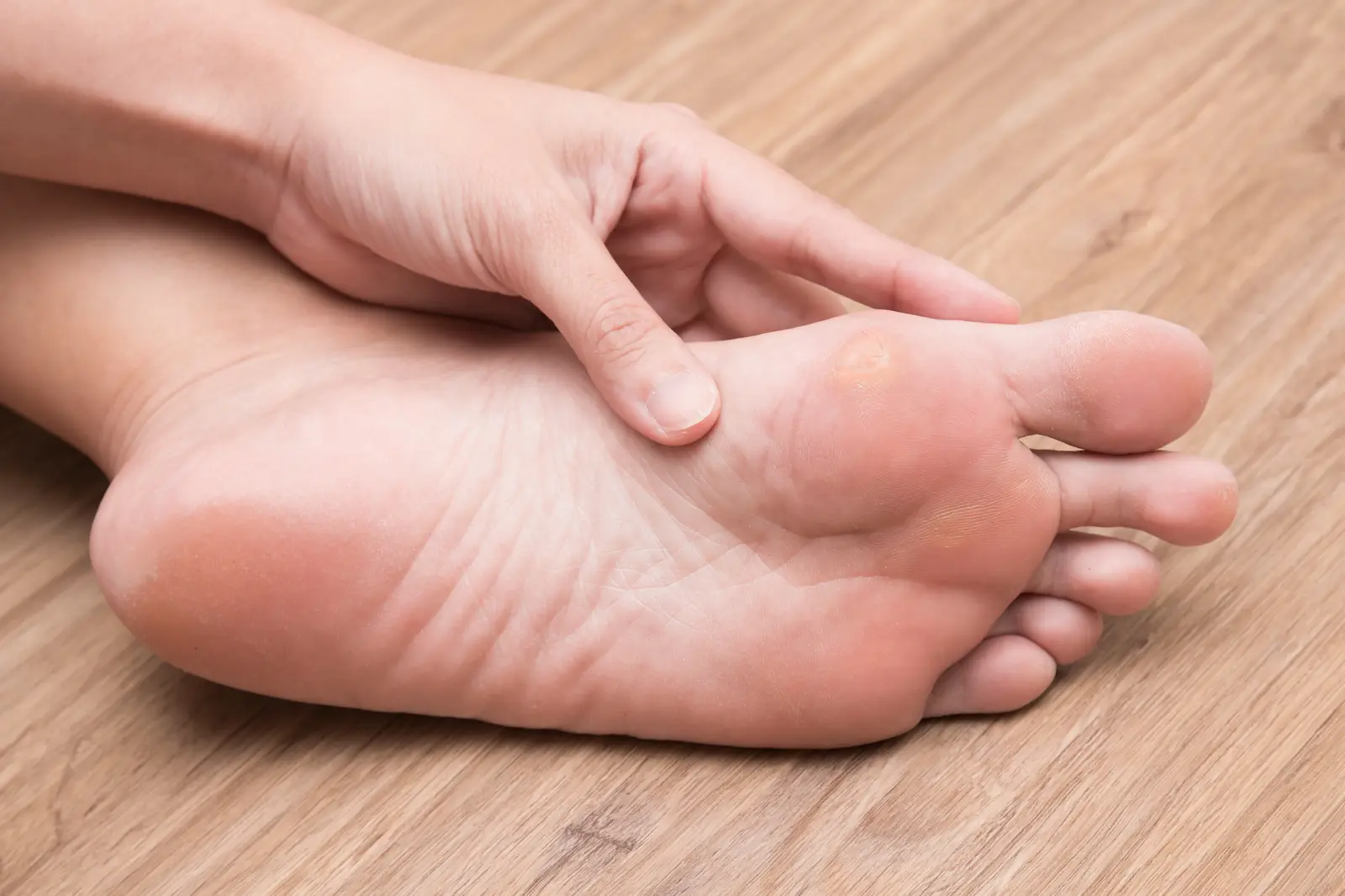Calluses/Corns
Learn More
What are Calluses & Corns?
Calluses and corns are thickened areas of skin that develop as a response to repeated pressure or friction. Calluses are larger, flatter, and often form on weight-bearing areas like the soles of the feet or palms. Corns are smaller, more localized, and can be painful, typically appearing on the tops or sides of toes. Both conditions are commonly caused by wearing ill-fitting shoes, walking barefoot, or repeated friction from physical activities. While generally harmless, they can cause discomfort and may require treatment if painful. Treatment includes removing the source of friction, using protective padding, or softening the skin with creams. In persistent cases, a healthcare professional may need to trim or treat the area.
Symptoms
What are the Symptoms of Calluses/Corns?
Thickened Skin
A noticeable area of thick, hardened skin, usually yellowish or gray in color.
Rough Texture
The affected skin feels rough or bumpy to the touch.
Dry or Cracked Skin
The thickened areas may appear dry or have cracks.
Pain or Tenderness
Corns, in particular, may cause discomfort or pain when pressed or during activities like walking.
Location
Calluses often form on weight-bearing areas like the soles of the feet or palms, while corns typically develop on toes, especially where shoes cause friction.
Callus/Corn FAQ
Calluses and corns develop due to repeated pressure or friction on the skin, often caused by tight or poorly fitting shoes, walking barefoot, or repeated activities like writing or manual labor.
Calluses are larger, flat, and typically form on weight-bearing areas like the soles of the feet. Corns are smaller, more localized, and often appear on toes or areas with concentrated pressure, sometimes causing pain.
They are generally harmless but can cause discomfort or pain. In people with diabetes or poor circulation, they may lead to complications and require medical attention.
Treatment includes reducing pressure or friction, using protective padding, soaking and softening the skin, or carefully trimming the thickened skin. Severe cases may require medical intervention.
Yes, by wearing properly fitting shoes, using padding or insoles, keeping feet moisturized, and avoiding prolonged repetitive friction or pressure on specific areas.
Seek medical attention if you experience severe pain, swelling, a popping sound during activity, or difficulty moving the foot. These symptoms could indicate a rupture requiring prompt treatment.






















